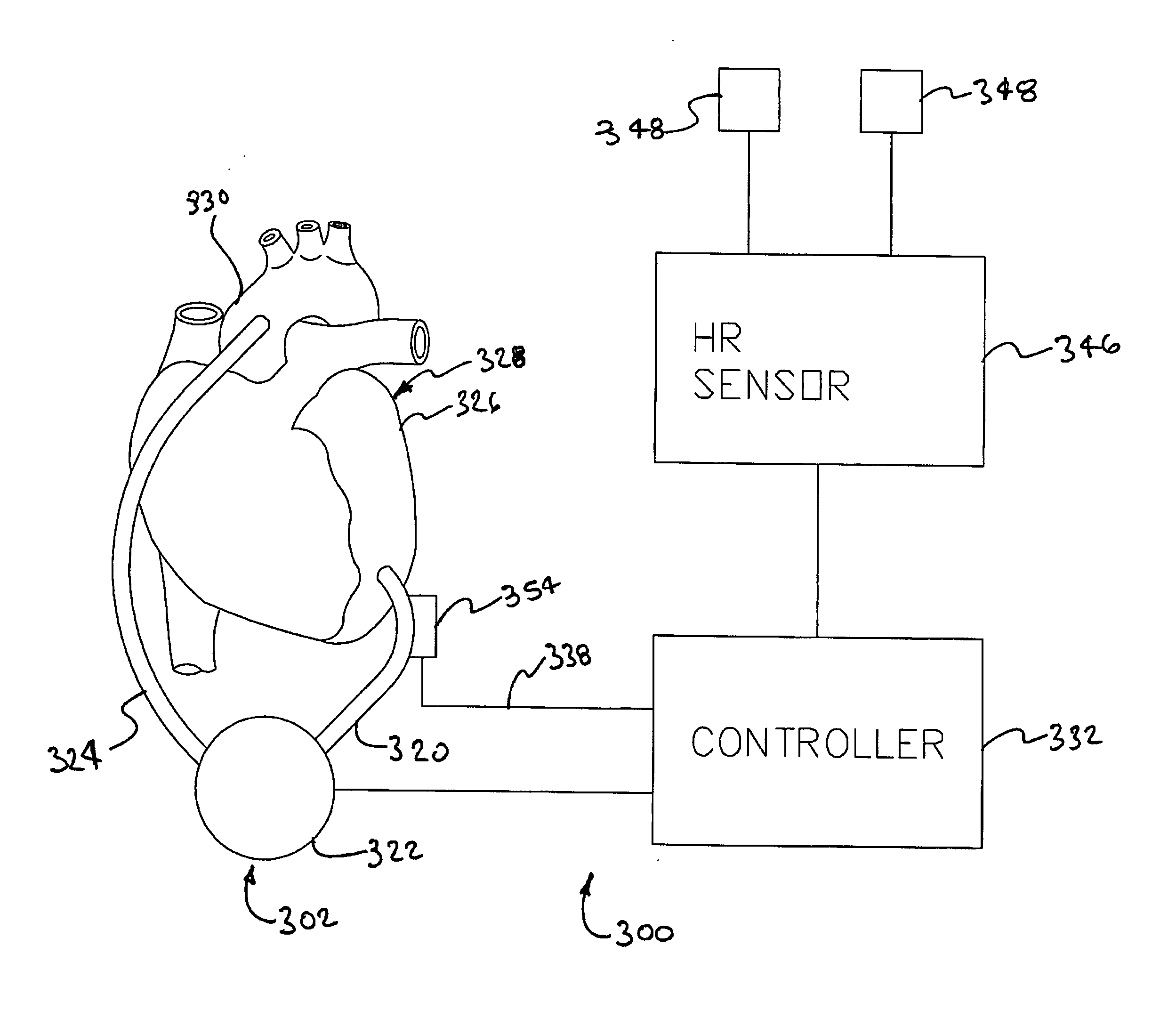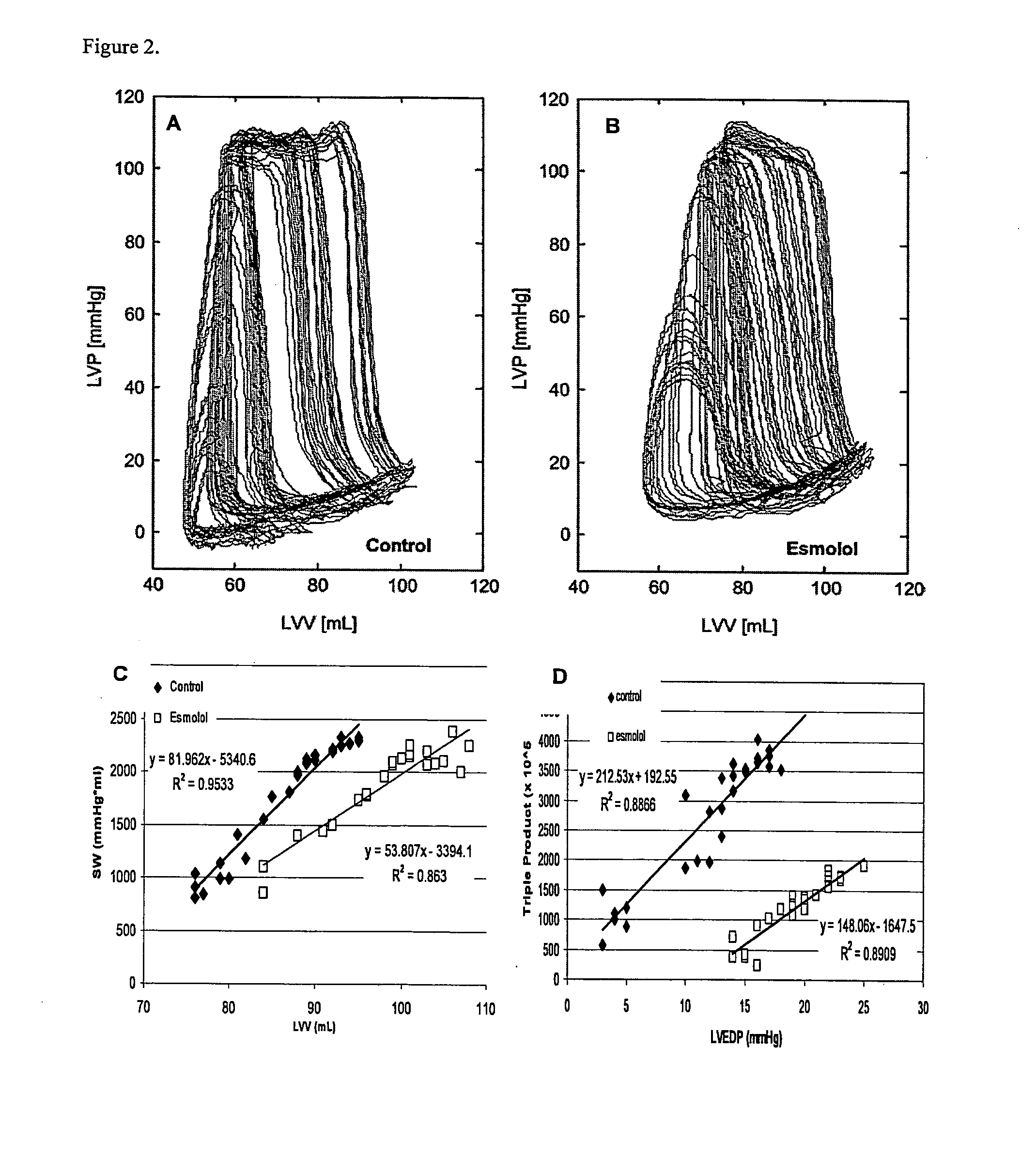Evaluation of cardiac function using left ventricular pressure during LVAD support
- Summary
- Abstract
- Description
- Claims
- Application Information
AI Technical Summary
Benefits of technology
Problems solved by technology
Method used
Image
Examples
Embodiment Construction
[0039]A method and apparatus is disclosed to assess cardiac function during axial-flow LVAD support that would allow for a) the frequent and b) the repetitive assessment of LV function from c) a single hemodynamic source—telemetered LV pressure. The relationship of the LV triple product (TP: LVSP*dP / dtmax*HR) to LVEDP, TP / EDP (slope: MTP), is used to provide an index sensitive to changes in cardiac function like the preload-recruitable stroke work (PRSW). A comparison of TP / EDP to PRSW in axial-flow LVAD subjects is made before and after beta-adrenergic blockade with esmolol.
LVAD Placement and Instrumentation
[0040]In accordance with this disclosure, adult Suffolk sheep (N=6, 78±3 Kg) underwent placement of axial-flow LVAD. Each animal was instrumented with a telemetered LV pressure manometer, an outflow graft transit time flow probe, and endocardial LV long and short axis piezoelectric crystals to derive LV volume and stroke work (SW). In unsedated sheep, LV load was varied by incre...
PUM
 Login to View More
Login to View More Abstract
Description
Claims
Application Information
 Login to View More
Login to View More - R&D
- Intellectual Property
- Life Sciences
- Materials
- Tech Scout
- Unparalleled Data Quality
- Higher Quality Content
- 60% Fewer Hallucinations
Browse by: Latest US Patents, China's latest patents, Technical Efficacy Thesaurus, Application Domain, Technology Topic, Popular Technical Reports.
© 2025 PatSnap. All rights reserved.Legal|Privacy policy|Modern Slavery Act Transparency Statement|Sitemap|About US| Contact US: help@patsnap.com



